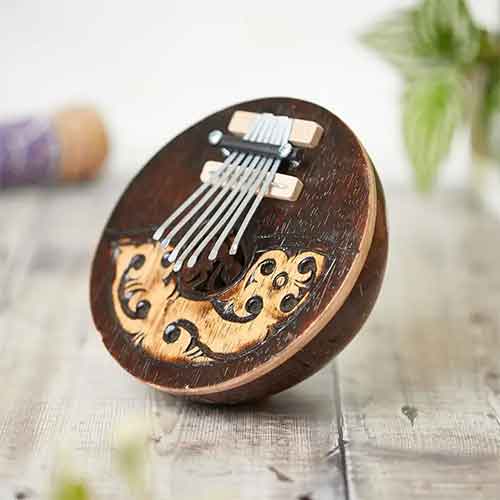Industrial furniture received its name during the industrial revolution in 1760s and whilst its focus was to support manufacturing it ended up becoming a modernised way of making furniture combining metal frames with wooden tops. In the modern era, the style is popular all over the world. It could be said that it was popularised because of its minimalist look and design. The metal accents combined with the unfinished wooden surfaces and hardware created a unique style.
The first industrial furniture pieces appeared during the beginnings of the 20th century. A good example here is the Nicolle chair, which was created in 1913 by the Nicolle factory. This was a metal stool that had a functional form, as well as a backrest in the form of a whale’s tail. They eventually made a new version with an adjustable height and swivel seat.
After WWII
Once WWII ended, there was a lot more focus on economic growth and building offices that were sturdy and reliable. The industrial furniture ideas fit right in, and the Remington Rand Chair is a prime example in this field. It was highly reliable and reputable, but at the same time it made things easier to manage and use.
However, styles started changing and people started shifting away from industrial furniture and focused more on other renditions of style. There were still industrial furniture products during the 70s, with a prime example being the Ruff Sawn Turnbuckle dining chair, which used metal accents alongside the solid wood structure.
During the 2000s, industrial furniture made a huge comeback. The reason was simple, minimalism was becoming more and more interesting, and people were focused on the idea of functionality and quality. Needless to say, industrial furniture managed to deliver all of this on all fronts. Another thing that helped push the limits was the environmental awareness, with people focusing more on the idea of repurposing stuff and finding new ways to breathe life into older items.
At this time, industrial furniture is still very popular and it continues to stand out as one of the most interesting and distinctive styles of all time. It’s great to see industrial furniture receiving the attention it deserves, since its beautiful, celebrates craftsmanship, and helps protect the environment.
From 1760 to 2020, as you can imagine the furniture industry has advanced a lot through the use of both manual carpentry techniques and in machinery. We specialise in wood furniture and have reimagined industrial furniture with sustainable mango wood and black steel table legs which creates a contrasting outline and array of colours. The exotic wood combined with the metal legs allows for a minimal look in a professional modern home.
Our coffee tables, dining tables and bedside cabinets are hand crafted in Jodhpur, India by artisans and independent mango wood manufacturers. Over the years our team have been learning about the interior design aspects of industrial furniture and we want to show you how you can customise your mango wood coffee table.
The steel legs are customisable, and our rustic furniture will look good in any room of your home. On top of that we also have complementing decor. The size of our dining table top can be customised so that you can use it as a suitable table for your dining room or so that you can have it as a desk for your office. Its the same with our coffee table, it is suitable for drinks but could also be used in the bedroom as a console table for the TV.
How to use industrial furniture for interior design

To make the industrial furniture look its best we recommend starting at the floor. The type of floor that looks the best is of course solid wooden floor or laminate. Rugs can be used to add to the look and are a great way to add a splash of colour whilst protecting your wooden floors. If you don’t want to use a rug, don’t worry because we do include rubber feet to protect the floor.
The next thing to look at is the colour of your walls and the texture. Industrial furniture looks great in front of a brick wall that has red hues or brown undertones. Another thing that can make a piece of furniture pop is using natural elements such as a plastered wall as a feature wall with the furniture in front of it. You can also use a plain white wall as a black canvas for the furniture and art work.
The last thing to think about is the secondary colour accents and furnishings such as cushions and curtain. The colours you choose across the room are up to you, you could go for a contrasting colour or a complementary colour using a colour wheel.
In the future we are looking to expand to bookcases, bar stools but let us know in the comments what your favourite type of industrial furniture is.
How to care for industrial furniture?
Industrial furniture will add a luxury element to your home whether that be a table or bookcase. Assuming that you have a piece of furniture already, you will want to know how to care for it. How you care for your industrial furniture will depend on how the furniture was made and it was it is made from. Most pieces of furniture that are industrial will combine steel coated metal frames with solid wood.
High quality furniture will be made from solid wood and poor quality furniture will be made from MDF, chipboard or another type of mechanically made material. Assuming that your furniture is made from solid materials, you should care for each material individually.
Use oil on metal to prevent rusting
As most industrial furniture has metalwork, you will need to oil the metal regularly to prevent rust from forming. The best type of oil to use for metal work is either raw linseed. If rust has already formed, you can in many cases remove the rust by using a product made for the purpose such as WD40 or you can use steel wool or a wire brush to scrub it off but you should be careful as the metal could be sharp and if there is a finish on the metal doing this may damage it.
Sometimes this process has to be repeated two or three times for the best results and unfortunately every metal will require a different process for care so the best thing to do is find out what metal you are working with and go from there. Avoid applying any chemicals, since these can damage the finish.
Caring for the wood
- Wood must be oiled every 6 months to prevent it from cracking
- Do not allow the wood to get wet for long periods of time
- Do not place wooden furniture near high humid areas
- Use natural beeswax polishes to enhance the grain and reduce risks of scratches.
- For coffee tables, you should use coasters for hot drinks
- Do not use silicone or solvent based cleaning products
Protect the powder coating
To clean the legs and to make sure that the powder coating doesn't get damaged you should only use a damp cloth to clean the legs and should ensure to dry them after. If the powder coating gets scratched, it may chip off and if it does the rest of the coating could chip away more easily. At the first sign of damage you can try to repair or lacquer the metal to protect it for many years to come.
Up next: what is BPA? How to avoid it?









